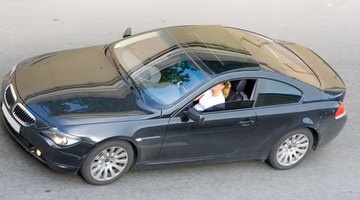All states have laws that limit vehicle window tinting, however, there are medical conditions that can exempt either a driver or a "habitual passenger" from these laws.
Conditioned Exemption

States do not have lists with specific medical conditions, but they offer instead forms to be filled out and signed by a physician, verifying that a driver or a habitual passenger has a condition that precludes sun exposure. The form may be obtained from the local department of motor vehicles or from the state's public safety department. Permanent sun-screening is not allowed for the windshield, but only for the side and the back windows, and only to precise degree specifications. The exemption is usually given for three to four years.
- States do not have lists with specific medical conditions, but they offer instead forms to be filled out and signed by a physician, verifying that a driver or a habitual passenger has a condition that precludes sun exposure.
- Permanent sun-screening is not allowed for the windshield, but only for the side and the back windows, and only to precise degree specifications.
Conditions

People suffering from certain genetic or systemic diseases such as Lupus erythematosus, Cockayne's and Bloom's syndromes, pellagra, protoporphyria or xeroderma pigmentosum should be protected from direct sunlight. Other skin photosensitivities such as solar urticaria and polymorphous light eruption preclude sun exposure as well. Cataracts cause dangerous glare, but some states, such as Vermont, do not allow eye exemptions at all.
Drug-Related Photosensitivity

Many pharmaceuticals, including some antibiotics, may cause photosensitivity. Check the adverse effects of all drugs you are taking.
